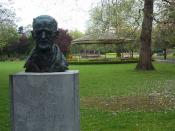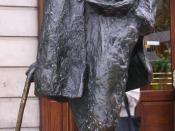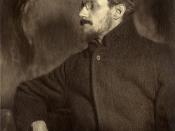According to Joyce himself, his intention was to "write a chapter of the moral history of [his] country and [he] chose Dublin for the scene because the city seemed to [b]e the center of paralysis". True to his goal, each of the fifteen stories composing Dubliners are tales of disappointment, darkness, captivity, frustration, and flaw.
We will concentrate on the first novel of this collection : The Sisters, studying religious imageries and symbolisms, examining Father Flynn's character, and broadening out on Ireland's paralysis.
The whole story focuses on the religion. Let's have a look at this theme by presenting the different religious imageries and symbolisms, and analyzing them.
Let's begin with the tradition of the candles - the word candle was introduced into the English language as an ecclesiastical term, probably as early as the eighth century - : "for I knew that two candles must be set at the head of a corpse".
The auxiliary "must" implicates the obligation, the enforced aspect of religion, instutating traditions that converts scrupulously applicate, often without even knowing why.
We should also look at the word ë Gnomon", not directly from religion, being the part of the parent parallelogram which is left over when a parallelogram is deleted from it. However, it shows us that the young boy has read Euclid's tratise on geometry, and it means that Father Flynn has probably instructed the boy in things apart from those of Church.
Simony is evoked, being a word sounding strangely in the narrator's ears : "It has always sounded strangely in my ears, like the word gnomon in the Euclid and the word simony in the Catechism". It is the deliberate intention of buying or selling for a temporal price such things as are spiritual of annexed unto spirituals. The presence of this...


